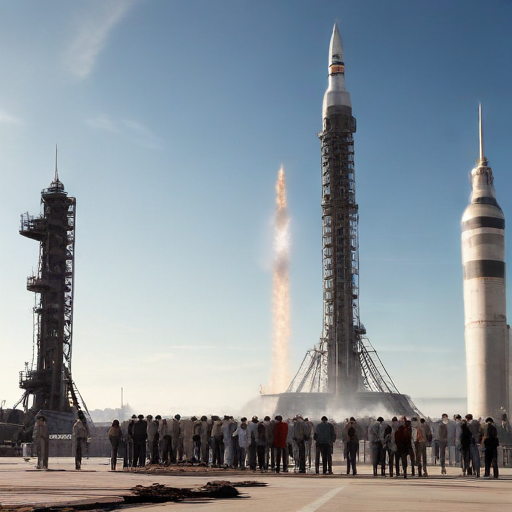SpaceX embarked on its sixth test flight of the Starship vehicle on November 19, launching the spacecraft from its Boca Chica, Texas test site at 5 p.m. Eastern time. The much-anticipated liftoff occurred without any issues as the vehicle entered a 30-minute launch window. Among the attendees at the event was President-elect Donald Trump, who has fostered a close relationship with SpaceX CEO Elon Musk.
During the mission, the Super Heavy booster, identified as Booster 13, successfully detached from the Starship upper stage approximately 2 minutes and 45 seconds after takeoff. However, shortly thereafter, mission controllers called for a “booster offshore divert,” indicating that the booster would not return to the launch pad as initially scheduled. Although SpaceX did not elaborate on the reasons for this diversion, the booster ultimately made a controlled landing in the Gulf of Mexico, but tipped over and exploded shortly after.
Despite the setback with the booster, it successfully launched the Starship upper stage, designated Ship 31, into a suborbital trajectory. Notably, SpaceX tested the igniting of one of its Raptor engines during the mission, which is a crucial aspect for future deorbit maneuvers. The Starship then reentered over the Indian Ocean, where adjustments to the reentry profile were made to test the vehicle’s capabilities under stress. Prior to the flight, Kate Tice of SpaceX had indicated that the flight might not proceed smoothly as the team sought to explore the vehicle’s limits in preparation for future missions.
The Starship completed reentry intact, though it showed signs of damage to some components, including a flap. Ultimately, it achieved a powered soft landing in the ocean, where it tipped onto its side and floated on the surface. The change in the launch time allowed for improved visibility during the splashdown, positively impacting the coverage of the event.
Looking ahead, SpaceX plans to incorporate various upgrades into the next iteration of the Starship upper stage. These enhancements include longer propellant tanks that will increase payload capacity from 1,200 tons to 1,500 tons. The design of the forward flaps will be altered for better heat protection during reentry. The company has not announced a specific timeline for the next launch.
Importantly, this flight was completed only a month after the previous one, as SpaceX did not require modifications to its launch license from the Federal Aviation Administration, allowing for continuous progress in its testing schedule.
Overall, while there were challenges during this test flight, SpaceX remains committed to pushing the boundaries of space exploration, learning from each mission, and steadily progressing toward its ambitious goals. This optimistic outlook is bolstered by the ongoing enhancements the company is implementing in its vehicles, which will hopefully lead to even more successful missions in the near future.
